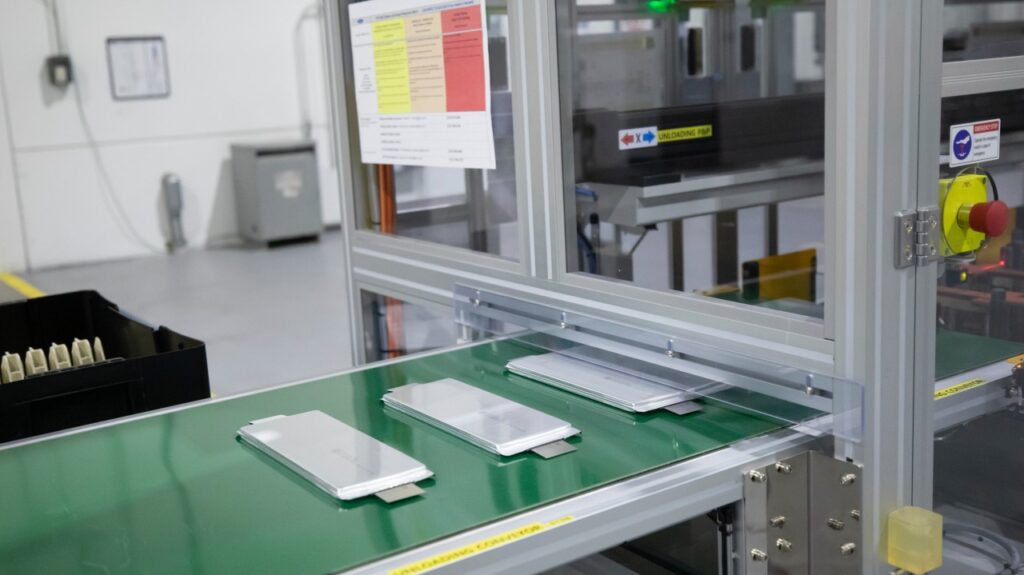Ford Makes Breakthrough With Lithium Manganese Rich (LMR) Battery Chemistry
On April 23, 2025, Charles Poon, Director, Electrified Propulsion Engineering at Ford Motor Company announced an amazing battery technology breakthrough for electric vehicles made by the company.
Today marks a pivotal moment in Ford Motor Company’s electrification journey and a significant milestone for the future of electric vehicles. After years of rigorous research and development at its state-of-the-art Battery Center of Excellence, Ion Park, Ford has announced a major innovation: Lithium Manganese Rich (LMR) battery chemistry — a game-changing advancement poised to reshape the EV landscape.
This is far from a theoretical breakthrough. Ford is actively scaling its LMR cell technology, with second-generation LMR cells already being produced on its pilot line. The company aims to integrate this cutting-edge chemistry into its next generation of vehicles before the decade is out.

The LMR Advantage: A New Standard in Battery Technology
Ford’s LMR batteries promise to usher in a new era of electric mobility, delivering notable advantages across several critical dimensions:
Enhanced Safety and Stability: With a safety profile comparable to Lithium Iron Phosphate (LFP) batteries, LMR offers peace of mind without compromising performance.
Industry-Leading Energy Density: LMR chemistry provides higher energy density than high-nickel batteries, allowing EVs to achieve greater range and reduce consumer range anxiety.
Unprecedented Cost Reduction: Ford is targeting a cost point well below current mid-nickel batteries. This cost efficiency is essential to reaching parity with gasoline-powered vehicles and making EVs more accessible to the masses.
Ford Ion Park: Powering the Future from the Inside Out
At the heart of this innovation is Ion Park — Ford’s dedicated Battery Center of Excellence. Home to more than 135 top-tier chemists, engineers, and scientists from the world’s leading battery firms and research institutions, Ion Park serves as the epicenter of the company’s battery innovation strategy.
Equipped with some of the world’s most advanced tools and an open, boundary-less environment, Ion Park is designed to foster bold thinking and radical problem-solving. The culture is built around relentless innovation — challenging convention and pushing limits in materials science, cell architecture, and manufacturing.
Ford’s battery roadmap has evolved from nickel cobalt manganese (NCM) batteries to the inclusion of LFP chemistry in 2023. Now, LMR stands as the next major evolution — a compelling answer to the question, “What comes next?”
Poon said: “We’ve fostered a culture of relentless innovation, where challenging convention and pushing the boundaries of what’s possible is part of our every day. From materials science to cell design to manufacturing processes, we’re tackling every aspect of battery technology with unwavering focus to reduce cost. Ford started by offering nickel cobalt manganese (NCM) batteries and later added lithium iron phosphate (LFP) batteries in 2023. LMR is the answer to “what next?”
Driving Toward a More Equitable EV Future
With the launch of LMR technology, Ford reaffirms its commitment to making electric vehicles not only desirable, but also affordable and accessible to all. The ultimate goal is clear: to close the cost gap between EVs and traditional internal combustion engine vehicles, creating customer-focused solutions that meet real-world needs.
By pioneering innovations like LMR, Ford continues to lead the charge toward a future where electric vehicles are not a luxury — but a standard.

Electric Vehicle Marketing Consultant, Writer and Editor. Publisher EVinfo.net.
Services